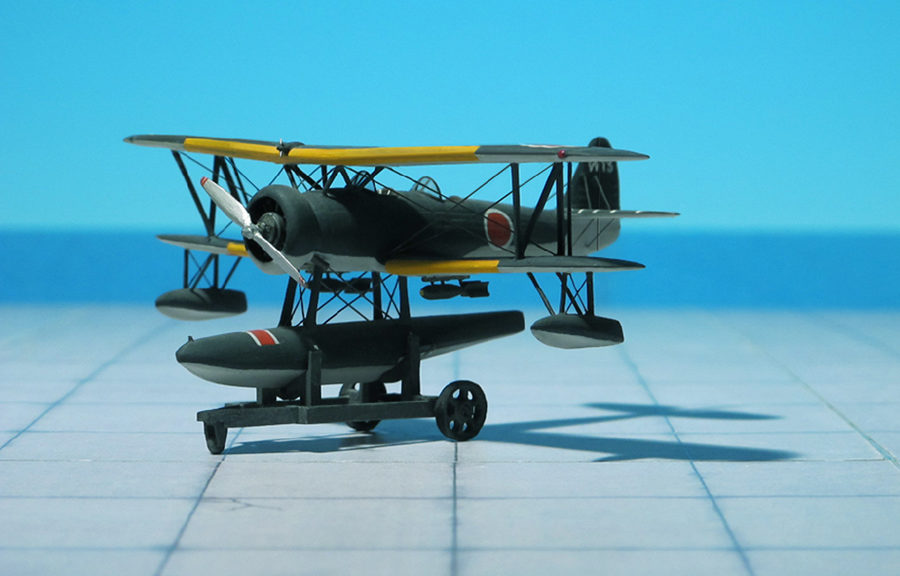TYPE: Ship-borne reconnaissance floatplane, Trainer
ACCOMMODATION: Crew of two
POWER PLANT: One Nakajima Kotobuki 2 KAI 2 radial engine, rated at 630 hp
PERFORMANCE: 186 mph
COMMENT: The Nakajima E8N was developed as a replacement for the same company’s E4N and was essentially an evolutionary development of the earlier type, with revised wings of lesser area and taller tail surfaces. Seven prototypes were constructed, under the company designation MS, first flying in March 1934. These were duly engaged in comparative trials against competitors from Aichi and Kawanishi.
The MS was ordered into production, designated Navy Type 95 Reconnaissance Seaplane Model 1 in October 1935. A total of 755 E8Ns were built by Nakajima and Kawanishi, production continuing until 1940. Operating as a catapult-launched reconnaissance aircraft the E8N was subsequently shipped aboard all the capital ships then in service, battleships, cruisers and aircraft tenders. It was used successfully in the Second Sino-Japanese War and distinguished itself on several occasions by destroying opposing Chinese fighters. Occasionally the aircraft was operated as a dive-bomber but was more often employed as a reconnaissance and artillery spotting aircraft.
One E8N was purchased in early 1941 by the German Naval Attaché to Japan, Vice-Admiral Wenneker, and dispatched on board “KM Münsterland” to rendezvous with the German auxiliary cruiser “Orion” at Maug Island in the Marianas. The meeting occurred on 1 Feb 1941, and “Orion” thus became the only German naval vessel of the Second World War to employ a Japanese float plane.
Some aircraft remained in service with the fleet at the outbreak of the Pacific War, and one flew reconnaissance from the battleship Haruna during the Battle of Midway. The type was coded “Dave” by the Allies. Later, they were replaced by more modern aircraft such as the Aichi E13A and the Mitsubishi F1M and the remaining aircraft were reassigned to second-line duties for instance communications, liaison and training (Ref.: 24).












